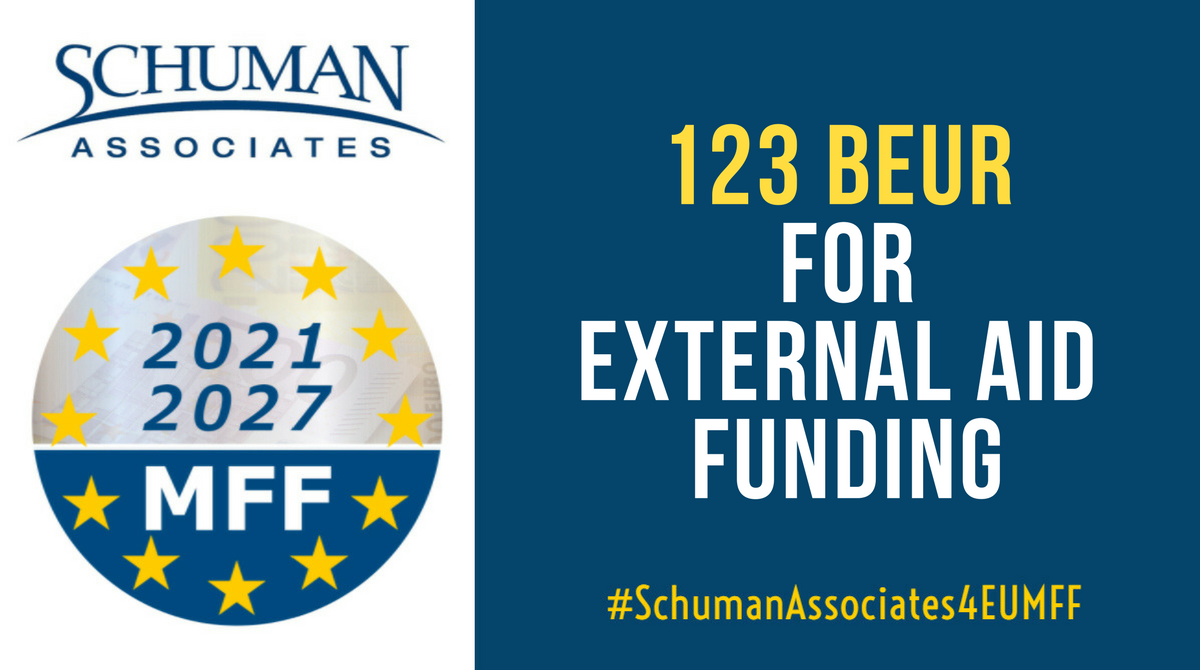New architecture of EU External Aid Funding Instruments

On 2 May 2018, the European Commission presented its proposal for the EU’s next seven years budget cycle (also known as the Multiannual Financial Framework – MFF) covering the period 2021-2027. The proposal will now go to the co-legislators (European Parliament and Council) which will further discuss and amend accordingly. In the best case scenario, the Commission expects to have the MFF ready before the European Parliament’s election taking place at the end of 2019.
The Commission is proposing a significant restructuring of the External Aid funding instruments in order to better tackle the external challenges the EU wants to address. The main take away is that the overall funding under ‘Global Europe’ heading, now renamed ‘Neighborhood and the World’, is increased from 66.3 BEUR (96.8 BEUR if the off-EU budget EDF is taken into account) to 123 BEUR (in current prices) for the future 2021-2017 MFF.
The Commission's proposal reflects a strong focus on strategic priorities both geographically (Neighborhood, Western Balkans and Africa) and thematically (security, migration, climate change and human rights). In this sense, the main features of the newly proposed architecture can be summarized as follows:
- The Instrument for Pre-accession assistance is increased from 11.7 BEUR to 14.5 BEUR. It will support candidate countries (Serbia, Montenegro and Turkey) and potential candidates (Macedonia, Albania, BiH and Kosovo) on their path to fulfilling the accession criteria.
- The three other main instruments European Neighbourhood Instrument (ENI) 15 BEUR (2014-2020), Development and Cooperation Instrument (DCI) 19.6 BEUR (2014-2020) and the European Development Fund (EDF) 30.5 BEUR (2014-2020) are merged into one single instrument: Neighbourhood, Development and International Cooperation Instrument worth 89.5 BEUR. The merger and budget surge is a big novelty in the External Aid Funding and its subject to an increase in EU's Own Resources ceiling, as the EDF (the off-EU budget instrument covering the ACP relations) is now integrated under the common EU budget.
- Blended finance will continue to play a key role in development and cooperation. The newly created European External Investment Plan (designed to operate in Africa and the EU Neighborhood) and its European Fund for Sustainable Development (expected to leverage up to 44 BEUR) will allow for the “crowding-in” of additional resources from other donors and from the private sector.
- For Humanitarian Assistance, the Commission is proposing 11 BEUR in comparison with the 7 BEUR under the current MFF.
- Furthermore, the Commission is proposing to increase the resources available for crisis response to 1.4 BEUR in comparison with the 223 MEUR under the current MFF. This will be achieved through a reinforced Civil Protection Mechanism (rescEU) and an enlarged Emergency Aid Reserve, to provide financial means in case of emergencies inside and outside the Union.
- The Commission is also proposing setting up European Peace Facility; an off-EU budget instrument with a role similar to the existing African Peace Facility. The new facility will have universal coverage and will help the EU to close the gap between its ability to conduct Common Security and Defence Policy missions and to provide military and defence assistance to relevant third world countries.
For further information on Post 2020 funds, follow our dedicated series of briefs under the #SchumanAssociates4EUMFF or please contact us at
By accepting you will be accessing a service provided by a third-party external to https://www.schumanassociates.com/
